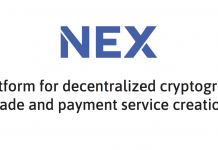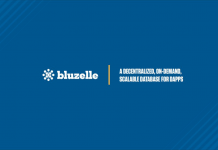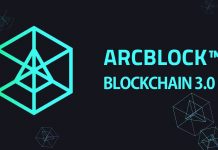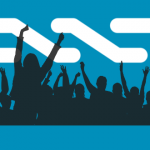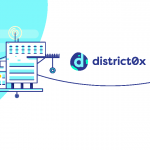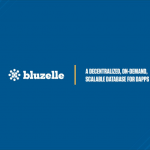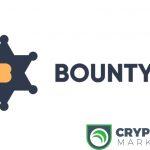ETHLend Project Overview.
Presale Date: Over.
Public sale Date: 25th November 2017-27th December.
ETHLend provides secured lending with the use of ERC-20 compatible tokens as a collateral. For example, users with a token portfolio are not required to sell the tokens to receive liquidity. Instead, the user can pledge the tokens to receive more liquidity. Alternatively, Ethereum Name Service (ENS) domains can be used to secure loans since these domain locks Ether when the domain is paid.
ETHLend will also create reputation based lending with the help of decentralized credit rating, which consists of data from decentralized credit tokens (CRE), decentralized identities such as uPort, and data feeds from centralized service providers such as credit institutions and social media. Moreover, services such as Bloom would be used to broadcast defaults on to the centralized credit scores.
Problems being solved:
- Loss of loan capital on default.
- Lending is not available on global scale. Instead of relying on local banks and lenders, borrowers should have the possibility to obtain a loan from anywhere in the world. When the lending market is not bound by borders and jurisdictions, true competition can happen and more liquidity become available for the lending market.
- Inequality in the way access to the lending market is distributed. Today the inflation-adjusted interest rate in different countries varies based on the available liquidity. In high liquidity market, Europe, interest rates are between 0.5-5 percent, in Russia 12-15 percent, in India 12 percent and in Brazil 32 percent. With ETHlend, the same amount of liquidity is available, for example, in China as in any country in Europe or Africa.
- Less control for the banks. Banks lend money that is deposited by account holders when banks need liquidity. With ETHLend, you become your own lending institution. You decide whom you lend to, on which interest rate securely or insecurely.
How it works.
- Borrower creates a Smart Contract by creating a New Loan Request.
- Borrower places data on the Smart Contract, such as the loan amount, premium, which token is used for collateral, amount of tokens and the collateral token address.
- Borrower sends the tokens to the Smart Contract.
- Lender funds the loan by sending loan amount to the Smart Contract.
- Borrower repays the loan by sending loan amount back and the premium to the Smart Contract. Lender receives the loan amount and premium and borrower receives the tokens back from pledge; or
- Borrower does not repay the loan on time, the tokens are transferred to the lender (who can sell the tokens on exchange).
Users.
- Borrowers.
- Lenders.
- Insurance companies.
- Bot developers.
LEND token uses.
- Discount ticket on fees on ETHLend. Receive 25% price reduction on platform fees (Loan request fee and Loan funding fee) compared to paying with ETH.
- Rewarding active lenders and borrowers with airdrops. ETHLend will use 20% of the decentralized application fees (loan request fee and funding fee) to purchase LEND from the market and airdrop the LEND for all the lenders and borrowers on ETHLend, based on the previous period’s volume.
- Featured functions that are accessible only with LEND tokens. ETHLend will provide functions that are only accessible with the use of LEND (can be only paid with LEND). These featured functions will include featured loan listings and email marketing campaign for new loan requests.
- Rewarding Introducers with LEND. ETHLend will purchase additional amount of LEND to reward lenders and borrowers or third parties who introduce new participants on to the decentralized lending platform.
Roadmap.
- ETHLend Alpha on Ethereum main-net on Q2 2017
- ENS Domains as collateral on Q2 2017
- Reputation-based Lending with CRE on Q3 2017
- Token Sale Smart Contract on Q3 2017
- Security Audit for the Token Sale Smart Contract on Q3 2017
- USD Based Loans and Installments Q4 2017
- On-Demand and Crowd Lending (Loan Offers from Lenders) on Q1 2018
- User Experience Upgrade on Q1 2018
- Decentralized Credit Rating (DCR) on Q1 2018
- Penalties for Late Payment on Q2 2018
- Lending Bitcoin on Q2 2018
- LEND accepted as payment with 25% discount on Q2 2018
- Gateway for Decentralized Providers (uPort, Civic) to DCR on Q2 2018*
- Oracles: Centralized feeds to DCR on Q2 2018*
- Second User Experience Upgrade on Q3 2018
- Protocol to enable AI and Big Data to assess Credit Risk on Q3 2018*
- Revenue scheme for AI Credit Risk bot creators on Q3 2018*
- Prediction Market to Assess Credit Risk on Q4 2018*
- Lending Other Altcoins and tokens on Q4 2018*
- Protocol to Enable Insurance Policies (with AI bots) on Q1 2019
- Sophisticated collateral control (Calling & Liquidating the collateral) on Q2 2019
- Competitive bidding on interest rate between lenders on Q3 2019
- Expanding Decentralized Lending and Decentralized Credit Rating beyond Ethereum network Q4 2019
Review/ICO Scoring Metrics.
- Concept.
Industry: Banking/p2p lending/Credit scoring/Prediction markets
Similar projects: Celsius, Paypie, Bloom, Micromoney, Blockmason, Everex, Salt.
Existing companies: N/A
Level of competition: Low
How is it different from other projects in the space?
- Crypto lending.
- Uncollaterized loans using uPort and CRE tokens.
- On-demand lending. There will be loan offers that lenders can place on the decentralized application by stating how much liquidity and on what price the lender is willing to provide the liquidity. The lender also indicates which tokens the lender accepts as a collateral or which credit rating must be met.
- Crowd lending. Option where the risk is shared amongst multiple lenders.
- Competitive Bidding on Interest Rate between Lenders. ETHLend will develop auction-like bidding functionality for the decentralized application to provide the best market rate on interest rates for the borrowers.
Scale of problems being addressed: High
Securities Token: NO
Market dynamics: The global P2P lending market is expected to grow at a CAGR of 53.06% during the period 2016-2020
Sources of revenue: Loan request fee and funding fee.
Use cases:
- In crypto economy: Borrowing Ether to participate in different ICOs and purchasing tokens from the exchange for investment strategies without the need to sell tokens. Lending altcoins and tokens for short selling or hedging. Financing mining expansions, liquidity for trading, finance for blockchain startups for ICO marketing by pledging ICO tokens. Unleashing the Ether locked in ENS domains for any finance goal.
- In FIAT-economy: By using FIAT-pegging (using USD instead of Ether as a calculation), any finance goal of real world can be met without bearing the volatility. FIAT pegging also creates wider opportunities for lending ETH for investment purposes (investing in ICOs or tokens from exchange).
- Future use-cases: Tokenization of Things. Pledging real property, shares, intellectual property and physical objects (such as cars, boats, power plants, solar energy plants and art).
- Data for insurance companies.
Regulatory risks: It’s not a securities token.
- Team.
More than 2 members with past experience in this industry: No
More than 2 members who are past company CEOs/Founders: Yes
More than 2 members with technical experience: No
More than 2 members with previous blockchain experience or experience building an open source community or platform on a large scale: Yes
More than 2 notable advisors from other blockchain projects: Yes
More than 2 advisors with past experience in this industry: Yes
More than 2 advisors with technical experience: Yes
More than 2 advisors who are company CEOs/Founders: Yes
More than 2 advisors with previous blockchain experience or experience building an open source community or platform on a large scale: Yes
Popular advisors: Tomoaki Sato
- MVP.
Any previous activity related to the project: None
GitHub presence: Yes
Partners: Digix, Bloom
VC funding: None
Actual alpha, beta etc. available on website: Yes.
Token expected usage date: Q2 2018.
Working product: Already working.
Roadmap ends: Q4 2019
- Blockchain leverages.
Smart contracts: Used to store loan agreement data including the information on the loan capital, premium (interest charged), days to loan and the parties of the loan agreement. This means that when deployed, the loan agreement (the code) cannot be manipulated or compromised, even by ETHLend since the code is running on the blockchain, copying itself from hard-drive to hard-drive; Used to store the loan collateral until the borrower has repaid the loan and the premium; Used to create credit token or CRE as a decentralized reputation system whereby the borrower is rewarded for each repaid loan; smart contracts are used to handle complex transactions such as future payments, sending tokens, sending ENS domains and conducting all sorts of calculation; Used for on-demand ending
Tokenization: ERC-20 compatible tokens are used as a collateral to secure loans on ETHLend; Assets such as real property, company shares and commodities can be placed on a token and pledged for a loan. Tokens at the loan market that have less volatility and are more suitable as a collateral. Even further, one could tokenize his house that is under construction and pledge it to receive a loan from lenders all parts of the world.
Removal of third parties: ETHLend decentralizes lending, so banks or any other intermediaries are not required for conducting a loan transaction. Decentralization means also that borrowers and lenders do not need to trust even ETHLend once the Smart Contract is deployed to the Ethereum network.
Any centralization aspect: The credit rating may consist of data feeds from centralized service providers such as credit institutions and social media.
Scalability: Ethereum.
DAO: No.
Transparency: The transparency that the Ethereum blockchain ledger provides is vital for a lending system that works complete out of the banking system since public ledger makes trustless lending possible. The lender is always able to check whether the borrower received the loan and vice versa.
Database: KYC data is stored on decentralized storage.
Oracles: Oracles provide a gateway for credit institutions and centralized data to be broadcasted on the user’s Decentralized Credit Rating profile. Additionally, oracles can also be used to provide feeds from social media for creating a more complete credit profile.
- ICO Structure.
Popularity: High
Bitcoin talk pages: 7
Bitcoin talk interactiveness: High
Presale absent: No
Whitelist absent: No. There is a whitelist for 5000 participants.
Bonus for whales absent: Yes
No Registration required: No
Minimum amount: 0.01 Ether
Individual cap: None
ICO Timeframe 1 month: Yes
No ICO extensions: ICO not started
Soft cap reached: ICO not started
Token scarcity: 1 Billion LEND.
Vesting: Yes
Token price: $0.015-$0.017
Public sale hard cap amount: $16.2M
ICO Token percentage: 64%
Limitations: US
Presale amount: 6%
Presale amount reached: Yes
Public sale Progress so far: Not started yet
Smart contracts already audited: Yes
Escrow: N/A
Get the overall score of this ICO as well as other ICOs here



